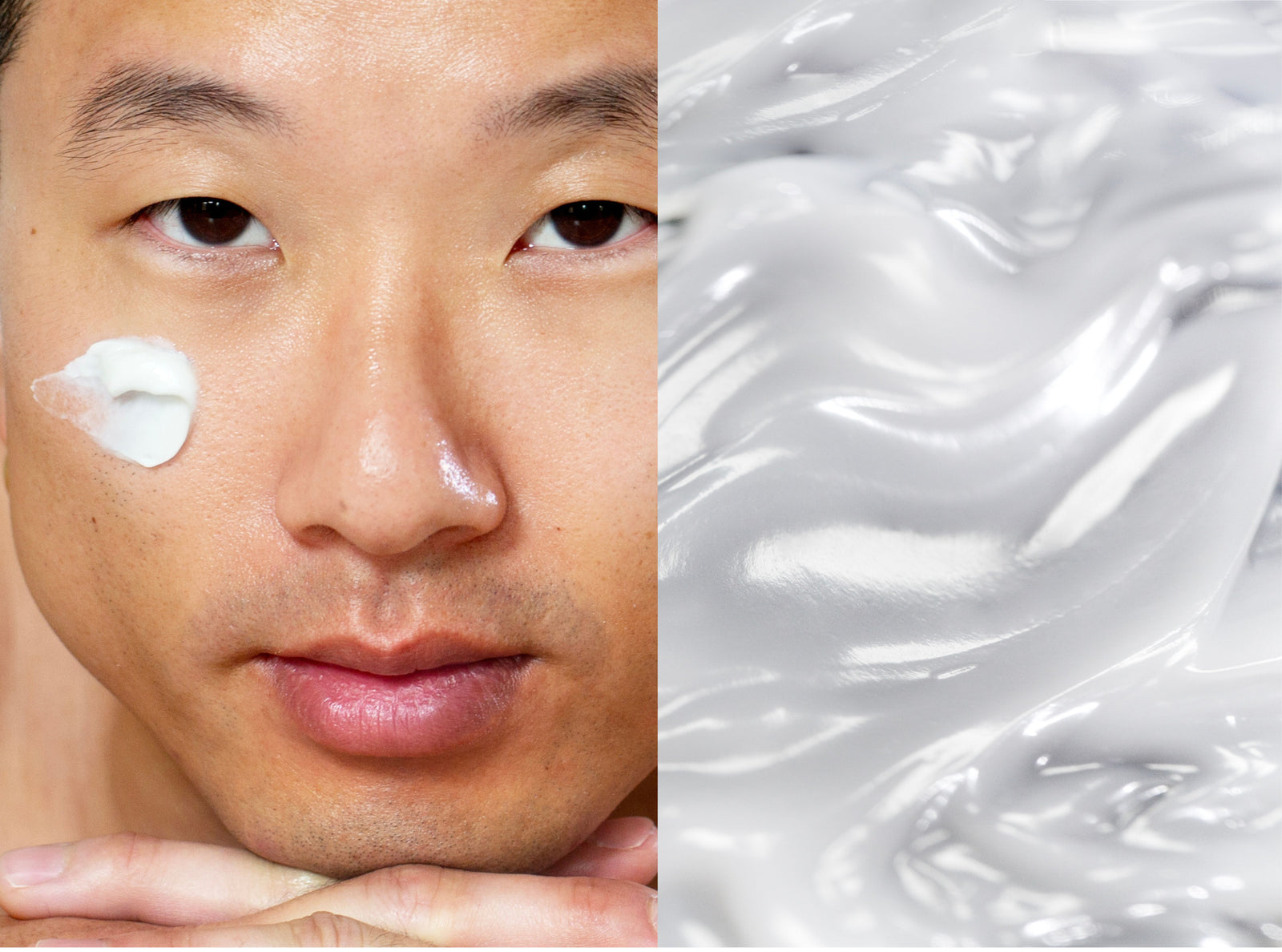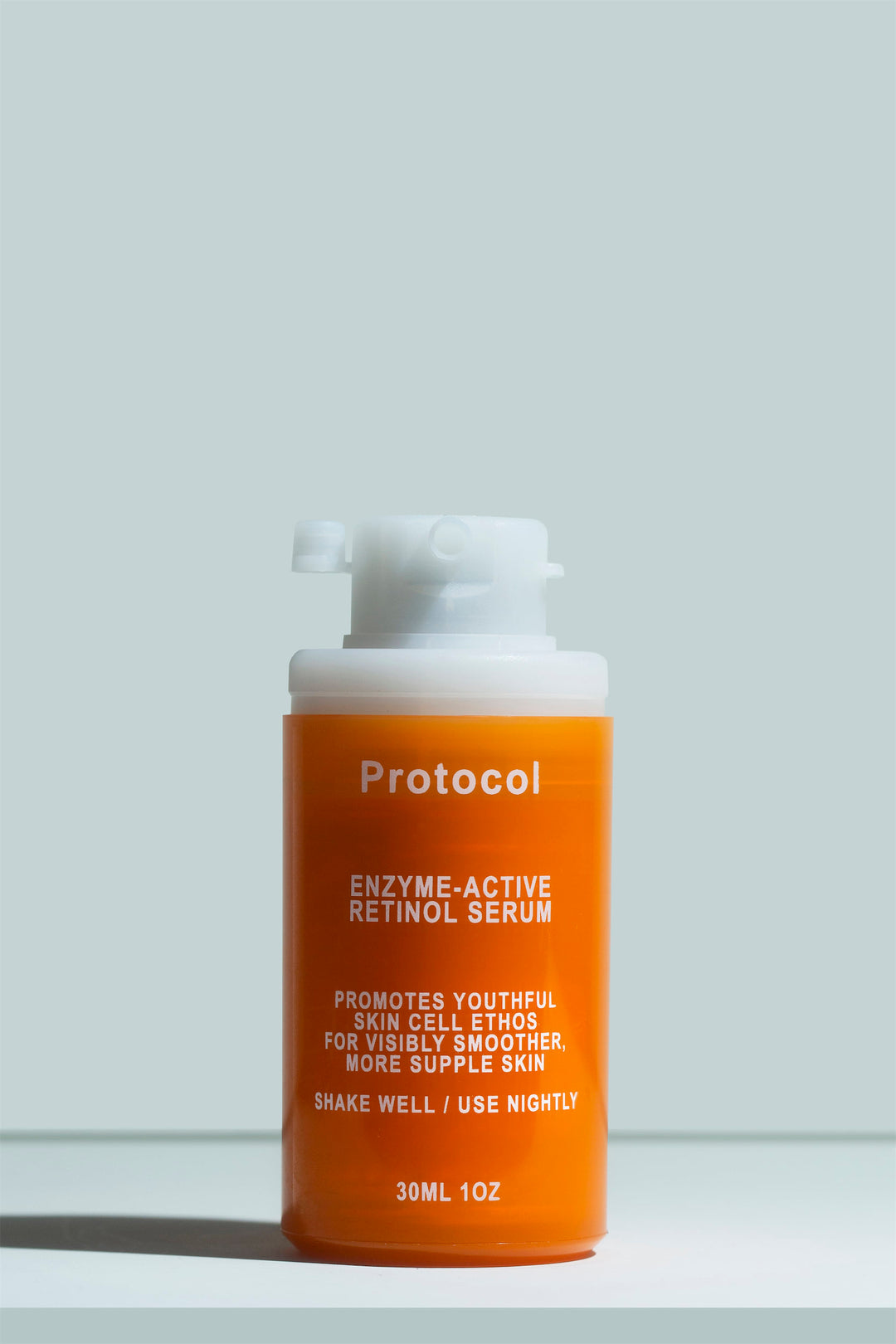Can I Use Niacinamide With Hyaluronic Acid?

Niacinamide and hyaluronic acid are everywhere these days, and we’re not surprised if you want to include them both in your routine. Maybe you’re new to skincare or can’t remember what goes where. Either way, you might be wondering: Can you use niacinamide with hyaluronic acid?
We love complicated skincare science and digging deep into research, but in this case, there’s little need, since the answer is simple: Yes! You can use niacinamide with hyaluronic acid.
And it’s perfectly okay to use them in just about any way you can imagine. In this post, we’ll cover everything you need to know about combining hyaluronic acid and niacinamide in your skincare routine.
What does niacinamide do, anyway?
Niacinamide is probably the most versatile ingredient in the skincare world. While it’s quite gentle, it contributes some improvement to almost any imaginable skin concern. It pairs well with other skincare actives (especially retinoids), helping to boost their effects.
Seriously, niacinamide’s skin benefits include:
- Improve dryness by bolstering the skin’s natural ceramide and fatty acid production.
- Reduces oiliness and fades blemishes by minimizing excessive sebum excretion.
- Fades discoloration and improves the look of dark spots.
- Reduces signs of sensitivity and redness by suppressing inflammation.
- Provides antioxidant protection to prevent premature aging.
What does hyaluronic acid do?
Hyaluronic acid, by comparison, is also impressive, but in a more specific way. It’s a powerful hydrating agent that belongs to a category of ingredients called “humectants”. Hyaluronic acid occurs naturally in the human body (including the skin), but its levels drop as we age.
In topical products, it holds up to a thousand times its weight in water, which it then delivers to the skin. It’s incredibly effective at reducing dehydration, which can be a skin concern for everyone regardless of skin type!
We only need small percentages of hyaluronic acid in our skincare to achieve solid hydration, although keep in mind that occlusives are also needed to seal that moisture into the skin.
Should I use niacinamide with hyaluronic acid?
Sure, why not?
Niacinamide and hyaluronic acid are both beneficial to all skin types. They work well together to create stronger, more hydrated skin.
That said, you technically don’t have to use either one in your skincare routine. Both ingredients are powerhouse well worth considering, but they’re not the only ingredients that do what they do.
For instance, while hyaluronic acid is a powerful humectant, you can enjoy similar effects from other hydrating agents like glycerin, butylene glycol, and panthenol. With niacinamide, you’ll want to choose other active ingredients depending on the effect you want to see.
Then again, hyaluronic acid and niacinamide are also ubiquitous. You’ll find them in a ton of products, sometimes as the stars, and sometimes supporting other ingredients. We don’t think you’ll need to go out of your way to introduce either one into your routine.
How to use niacinamide and hyaluronic acid together
There are nearly endless ways to use niacinamide and hyaluronic acid together in every skincare routine, from the bare-bones and minimalist to the involved and multi-step. No matter your skin type or concerns, it’ll be easy to introduce both ingredients into your routine, together or separately.
The easiest way to use both is to look for products that contain both. Whether in serums, creams, or even sunscreens, it’s easy to formulate products that contain both ingredients. Our Niacinamide and Hyaluronic Acid Hydration Cream is one good example.
You can also use them in separate products. There is no shortage of either serums or moisturizers that contain one or either ingredient, and it doesn’t matter which you layer first. You can use a serum with niacinamide and a moisturizer with hyaluronic acid or vice versa.
Some people choose to layer two separate serums and a moisturizer on top of that. That’s a lot of effort considering these ingredients that don’t need to be used separately, and it can increase your chance of skincare pilling. That said, if you do have two separate serums, you can always use one in the morning and one at night.
If your routine also includes other skincare actives, like vitamin C or retinol, it’s always best to use those first. This way, those ingredients with a more dramatic impact on the skin can be absorbed more effectively.
There are no conflicts or risks of irritation from using hyaluronic acid and niacinamide together (although there are some extremely minor risks to using them individually).
Which do I apply first, hyaluronic acid or niacinamide?
If your main skin concern is dehydration, apply your hyaluronic acid serum first (to damp skin). If your main skin concerns are related to oiliness, discoloration, or other concerns, you can apply your niacinamide serum first.
Regardless of key ingredients, always layer serums before creams or lotions, since serums are designed to permeate more deeply through the skin.
In general, layering a lot of products together will impact overall absorption, which is why we don’t think it’s ideal to seek out specific serums or toners just because they contain either hyaluronic acid or niacinamide. Plus, you can often find these ingredients added to formulas with other key ingredients, like the niacinamide in our Enzyme Active Retinol Serum or the hyaluronic acid in Water Lock.
How long to wait between hyaluronic acid and niacinamide?
Even when you’re using separate products with hyaluronic acid and niacinamide, you don’t need to worry too much about wait times. You can apply one product, wait a few moments for it to sink into the skin, and then apply the next one.
Can you mix niacinamide and hyaluronic acid?
Yes! You can save time in your skincare routine by mixing niacinamide and hyaluronic acid. Ideally, you’d just already be using products that contain both, such as moisturizers or other active serums, but if you already own separate serums, you can mix a small amount in the palm of your hand and apply to your skin as one step.
Risks and side effects
Both hyaluronic acid and niacinamide have unique reputations when it comes to safety. According to the Cosmetic Ingredient Review (the panel that advises the FDA), both are considered very safe and unlikely to cause adverse events.
However, the WebMD niacinamide listing mentions it may cause irritation or a burning sensation when used topically, although they don’t cite a reason for this warning.
On social media and in videos, some users do report mild irritation from over-use of hyaluronic acid (especially low-molecular weight hyaluronic acid), or dryness and skin purging from using high-percentage niacinamide formulas.
Give hyaluronic acid and niacinamide a try
If you want strong, resilient skin with a soft and springy touch, you should use hyaluronic acid and niacinamide together. To keep it simple, it’s best to use them in the same product or to look for them as supportive additions to other formulas.
One of the easiest ways to do that is to use our skin-renewing Hyaluronic Acid & Niacinamide Hydrating Cream. This luxurious formula is rich and deeply emollient but non-greasy. It contains hyaluronic acid and glycerin to attract much-needed H2O and plump up the skin, silky fatty acids to soften and seal in moisture, and niacinamide to encourage protein and ceramide proliferation for a stronger skin barrier.




